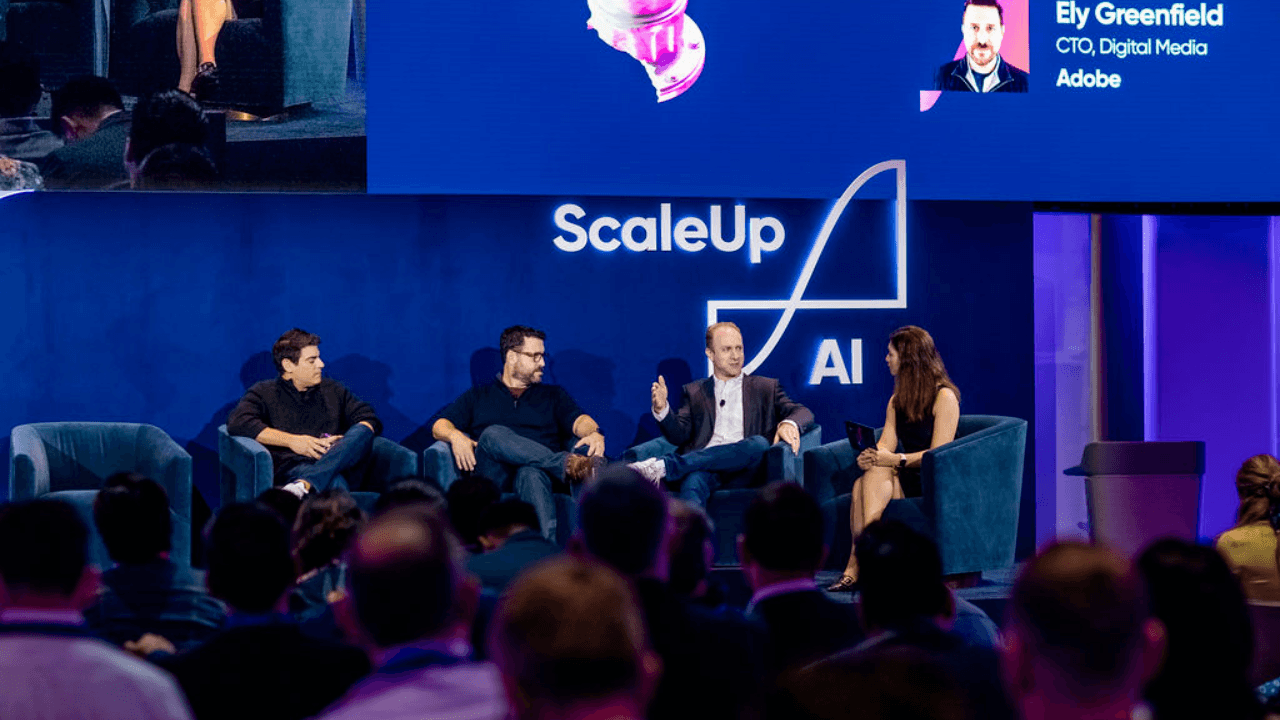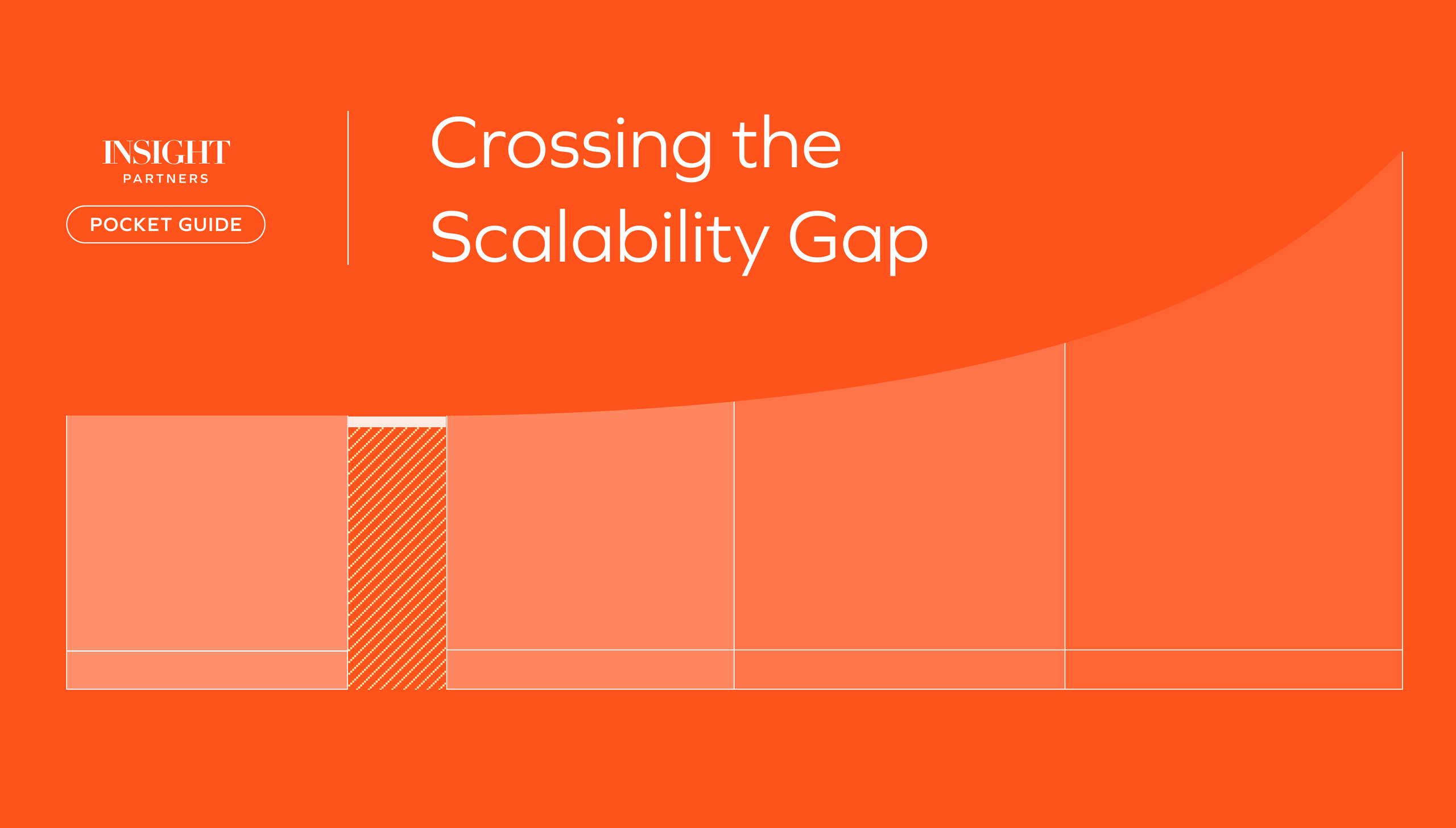Cutting through the hype and driving real outcomes with generative AI

Generative AI is the hottest technology of the moment, which means the market is awash with hyperbole and excess. Google‘s Jason Gelman, Adobe‘s Ely Greenfield, and Jasper‘s Shane Orlick cut through the noise with a clear-eyed exploration of the challenges, limitations, and, yes, benefits of genAI. These experts discuss how to integrate it successfully into your business as well as answer crucial questions, like how to be strategic versus reactive, which use cases to tackle first, and how to evolve your workforce.
These insights came from our ScaleUp:AI event in October 2023, an industry-leading global conference that features topics across technologies and industries. Watch the full session below:
GenAI is transforming work and innovation
The speakers each noted the transformative impact of genAI on their respective companies and industries. Gelman emphasized how genAI models and tooling are being integrated into their Vertex platform to enhance its utility. Greenfield focused on how creative models are driving the creative workflow, assisting creatives in their processes. Orlick spoke about how AI was increasing efficiency and productivity in their marketing stack.
“Where is [our customers’] magic wand?”
Gelman stated: “We sort of hit an inflection point in the market… the world actually is ready for these models to be exposed directly. The world wants to build on top of the capabilities that are coming out of Google’s research departments that we’ve been working on for the better part of a decade at this point.”
Greenfield noted: “We had to ask the question of… what are the problems that we want to solve…where is [our customers’] magic wand?” Orlick added: “We’re focused on how are our customers people that are using AI at work to create marketing copy… how are they going to be more successful using Jasper?”
AI for customers’ sakes
The panelists agreed that the key to successful AI integration is to focus on solving customer problems rather than merely introducing AI for its own sake. Orlick highlighted that Jasper’s rapid growth was due to their focus on customer outcomes and how AI could be embedded into their workflow, therefore delivering value. Greenfield explained how Adobe is designing models to meet specific customer needs, which requires understanding the problems customers are looking to solve.
“We really want our customers to be able to dive in as quickly as possible and be able to take advantage of it.”
Orlick commented: “We want our customers to use as much of Jasper as we can and then the responsibility is on us to make the outputs better and more efficient.” Greenfield added: “We really want our customers to be able to dive in as quickly as possible and be able to take advantage of it.”
Collaboration and leveraging different models are the future
There was a consensus among the panelists that the future of AI lies in leveraging a variety of models to meet specific customer needs. Both Orlick and Gelman talked about how their companies are using a mix of proprietary, open-source, and third-party models to provide the best solutions for their customers. They also emphasized the importance of collaboration and integration of AI into workflows and tools.
Orlick said,” Depending on the customer, depending on the customer’s requirements, depending on the requested output, we’ll use different models to support those different cases, and so…the output is just better.” Gelman added: “We want the best model to win, and I want the best model to be available on my infrastructure… we’ll have open-source, first-party, and third-party models all available using all of the Vertex tooling as well.”
While the executives agreed on the transformative potential of genAI, they acknowledged the uncertainties surrounding its future. In particular, they pointed out the ongoing debate on whether proprietary models, open-source models, or a combination of both will dominate the market.
“Every company has to start from, ‘What are the solutions that I need? What is going to solve problems for our customers?’ and then look at the resources they have, the models that are out there, whether they’re proprietary or open-source — and figure out which one is best for [them].
Greenfield explained, “Every company has to start from, ‘What are the solutions that I need? What is going to solve problems for our customers?’ and then look at the resources they have, the models that are out there, whether they’re proprietary or open-source — and figure out which one is best for [them].”
Pricing models pose interesting questions
The panelists discussed how the advent of genAI introduced new challenges and opportunities in terms of pricing and cost, especially with consumption-based models. Both Adobe and Jasper have experimented with different pricing structures to balance customer needs and business sustainability.
Orlick explained Jasper’s transition from capacity-based pricing to a per-user-per-month licensing model, with the aim of encouraging customers to use more of Jasper’s services. Greenfield discussed Adobe’s introduction of generative credits, a consumption-based model that balances the high cost of using AI models with the value they bring to customers. He stated, “We really want our customers to be able to dive in as quickly as possible and be able to take advantage of it. So every one of our customers gets some of those credits with their plans.”
Insight Partners has invested in Jasper.







